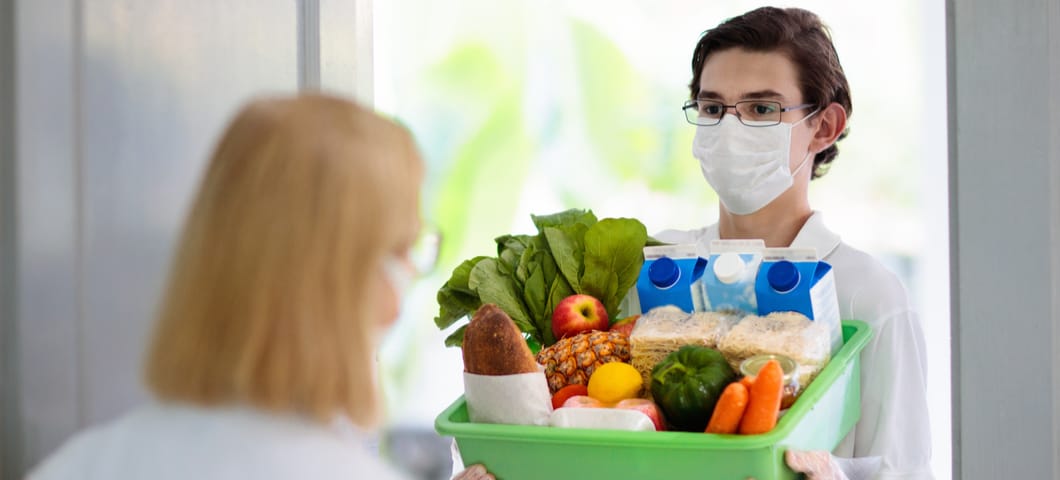
COVID-19 Innovations: The Impact on eCommerce and the Response
The full impact of COVID-19 on supply chains is still unknown, however, one thing is certain – it will have global economic and financial ramifications that will be felt through global supply chains, from raw materials to finished products. However, history has shown us that desperate times call for legendary innovations.
The Black Death in the 1300s broke the long-standing feudal system in Europe and replaced it with the more modern employment contract. Three centuries later, a deep economic recession due to the 100-year war between England and France generated an innovation drive that radically improved agricultural productivity. In more recent times, during the SARS pandemic of 2002-2004, the extraordinary growth of a then-small eCommerce company called Ali Baba revolutionized digital retail in Asia and around the world. The financial crisis of 2008 caused Airbnb and Uber to shoot up in popularity across America, leading to a new segment of travel and tourism.
We are already seeing shifts in how consumers and businesses behave with COVID-19. With tech and non-tech companies encouraging employees to work from home, airline companies being affected by low occupancy rates, and supply chains being disrupted globally, brands are having to respond to this pandemic by innovating their business processes. Some of these changes are short-term responses to the crisis while others are creating a long-term digital disruption that will shape the business for years to come.

COVID-19 Impacts on the CPG Industry
- eCommerce is Filling the Gap – CPG companies need to revamp their strategies and cling to eCommerce to fill in the gap between their store and their consumer
- Back in Stock Communications – With the supply chain disrupted due to closed factories in China, CPG businesses should set-up ‘back in stock’ communications to keep customers informed on products that are on the shelves
- Shifting the Marketing Mix – CPG brands are having to shift their marketing strategies to keep up with the ever-changing landscape that COVID-19 is creating. Switching more your ad budget to video platforms like television and even YouTube could be a good idea.
eCommerce is Filling the Gap
eCommerce activity, particularly related to health and grocery, is booming in the United States in general. Shopping via mobile and desktops are increasing exponentially for everything from pantry staples to impulse buys out of boredom. With over 58 percent of Americans indicating they are avoiding shopping centers and retail centers as the coronavirus outbreak worsens, CPG companies, like hand sanitizer brands, are stepping up their eCommerce games. Home delivery is becoming a lifeline in America, just as it became in China, and may become the new norm for the average consumer after this pandemic passes.
CPG companies that are not considered essential during a disease outbreak, like cosmetic brands, need to get creative with their eCommerce strategies in order to stay afloat. In an attempt to combat the immense drop in car sales that China saw, dealerships are testing eCommerce capabilities. Select dealerships are making the following changes to adapt to social distancing needs:
- Introducing one-on-one appointments in person
- Leveraging large showrooms to allow for social distancing guidelines
- Adding new services to their online stores
- Allowing test-drives at the home or office
- Offering at-home vehicle delivery
CPG businesses without an effective digital commerce channel or way to engage with their customers digitally, need to revamp their strategies and cling to eCommerce to fill in the gap between their store and their consumer.
Back in Stock Communications
Most CPG companies depend on Chinese manufacturing and these brands are feeling the burden of halted supply chains with deliveries being pushed out up to 90 days, blurred production timelines, and importation restrictions as countries close borders to reduce the COVID-19 impact. Other brands were unprepared for the rise in consumer demands for specific items like disinfectants, toilet paper, medical supplies, and other preventative goods. The hand sanitizer brand, Touchland, has a waitlist with over 10,000 names on it. In light of this, supply chain managers should work on setting up back in stock communications to keep information channels open with customers.
Once your back in stock information flow is set up, customers who subscribe to a restock alert will be stored and tracked on an individual profile. This profile then enters into a segment of people who are subscribed to receive an alert for a specific item. Once the item is restocked, they should automatically receive a notification that the item is available again.
This transparent communication is essential for CPG companies to minimize stress on consumers and build trusting relationship with them for the long-term.

Shifting Marketing Channel Mix
CPG brands are having to shift their marketing strategies to keep up with the ever-changing landscape that COVID-19 is creating. While overall ad spend is down, TV as spend could see an increase with more consumers staying home to work and keeping coronavirus coverage up on their television. Switching more your ad budget to video platforms like television and even YouTube could be a good idea.
In China, app downloads over the first two weeks of February were 40 percent higher than the average for all of 2019. With app downloads increasing as people spend more time at home, make sure your display advertising game is up to par, especially on a news app and social media apps.
Lin Qingxuan, a cosmetics company in China, was forced to close 40 percent of its stores during the coronavirus outbreak, including all of its locations in Wuhan. The company decided to deploy hundreds of their beauty advisors from those stores to become online influencers who leveraged digital tools, such as WeChat, to engage customers virtually and drive online sales. As a result, its sales in Wuhan achieved 200 percent growth compared to the prior year’s sales.
Shutting down brick-and-mortar stores doesn’t mean your CPG brand has to completely halt sales. Find ways to innovate your marketing strategy and your business processes to promote your products and services in a respectful manner. Balance promotions with helpful information so it doesn’t seem like your company is being insensitive to the current crisis. Most important, take care of yourself and your people. If you customers see you portraying your values during challenging moments, they will be loyal to you after all of this is over.